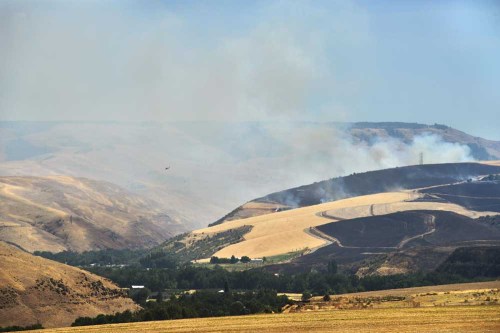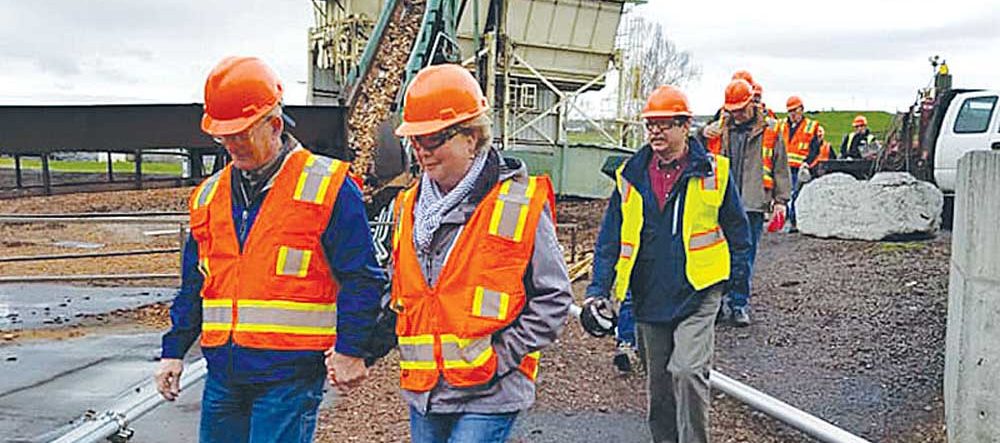Wildfire Awareness Month focuses on making homes safe from wildfire
Published 12:00 pm Monday, May 4, 2020

- A new study indicates climate changes will intensify wildfires in Oregon’s southern Blue Mountains, making them more frequent, more extensive and more severe. This August 2018 photo shows smoke from a wildfire billowing out of the Walla Walla River Valley in the foothills of the Blue Mountains east of Milton-Freewater.
SALEM — May is Wildfire Awareness Month in Oregon, and federal, state and firefighting agencies are encouraging Oregonians to make sure their homes and property are protected from wildfire, according to a press release from the Oregon State Fire Marshal.
Keep Oregon Green, in partnership with federal, state and local fire agencies and organizations, are promoting defensible space around homes before fire strikes this summer. With many Oregonians spending time at home because of statewide efforts to control the spread of COVID-19, residents can use the coming weeks to reduce risks and make their homes and communities safer.
“The roof is one of the most critical parts of the house when it comes to wildfire protection,” said Oregon State Fire Marshal Jim Walker. “Embers can collect and ignite on the roof, in gutters and enter unscreened openings around the house. Noncombustible roofing material is preferred. Regardless of the construction, please keep your roofs, gutters and eaves clear of all leaves, pine needles and other flammable debris.”
To reduce the risk, fire officials suggest removing dead vegetation a minimum of 30 feet around homes and other structures. In most cases, trees and healthy plants do not need to be removed. However, trees should be pruned and grass kept short and green to keep fire on the ground and more manageable by fire crews. Maintain a 5-foot fire-free area closest to the home using nonflammable landscaping material and fire resistant plants.
“Defensible space is a property’s first line of defense against wildfire,” Oregon Department of Forestry Fire Prevention Coordinator Tom Fields said. “Creating and maintaining defensible space around homes can improve your property’s likelihood of surviving a wildfire. Having defensible space also makes it safer for firefighters who may have to defend someone’s home.”
State officials said homeowners should also consider access issues for large fire trucks. Long driveways should be at least 12 feet wide, have 10 feet of vegetation clearance from the centerline out, and about 14 feet overhead. Large vehicle turnaround areas are critical for your safety as well as firefighter safety.
Should a fire occur near a community, Oregon Office of Emergency Management Director Andrew Phelps encourages residents to be prepared if an evacuation is necessary. “Wildfires can come without warning and move quickly, so residents need to prepare now in case they have to leave their home,” Phelps said.
“Make sure to put together a ‘Go Kit,’ register for emergency notification systems in your community and make a plan where your family will go and how you will stay in contact if evacuated.”









